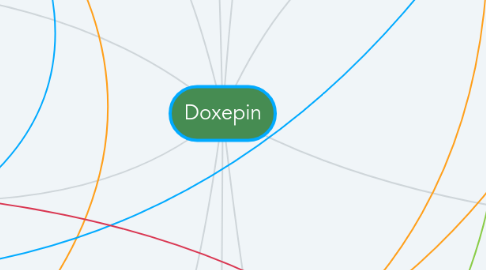Doxepin
저자: Melanie Jones

1. Dose
1.1. Range: Adult Inpatients; 25-150mg daily PO
1.2. Range: Adult Inpatients; 25-300mg daily PO
1.3. Range: Geriatric patients; 25-50mg daily PO
2. Indications
2.1. PO: management of Depression and Insomnia
2.2. Unlabeled Uses: PO; management of Anxiety
3. Lab Values
3.1. Therapeutic Range: 50-150ml over 150ml can result in toxicity/overdose
3.2. Increases of electrolyte in the body and decrease in urine (Na, K, Crea, BUN, Bicarb)
3.3. Cardiac Enzymes (cardiac tropinins) to be monitored for changes
4. Evaluation
4.1. Pt has an improved energy level, improved sleep, and decreased anxiety
4.2. Pt can identify side effects/adverse reactions that need to be reported to physician
4.3. Pt adheres and understands dosing, timing, administration instructions, limitations and safety implementation
5. Name/Classification
5.1. Therapeutic Class: Anti anxiety agents, anitdepressants, antihistamines (topical), sedative/hypnotic
5.2. Pharmacologic: Tricyclic antidepressant, with significant anti cholinergic effects
5.3. Drug Name: Doxepin
5.4. Brand Name: Silenor, Sinequan, Zonalon
6. Contradictions/Drug Interactions
6.1. Contradictions: hypersensitivity, products containing bisulfites, intolerance, untreated angle closure glaucoma, severe urinary retention, immediately after an MI, history of QTc prolongation, HF and cardiac arrhythmias
6.2. Caution when using with: Geriatric; CVD (increase adverse reaction risk), Enlarged Prostate (Increase urinary retention risk), Seizures
6.3. Caution when using with: OB; only use if maternal potential benefits outweighs fetal risk
6.4. Caution when using with: PEDS; may increase suicide risk, no safe dosage for under 18 determined yet
7. Action
7.1. Acts on the CNS and Brain by the following;
7.2. Prevents the reuptake of norepinephrine and serotonin using presynaptic neurons.
7.3. ^allows an increase of neurotransmitters with potentiated activity
8. Nursing Implications
8.1. Assessment: monitor BP and HR prior and during therapy with occasional ECG if cardiac history present
8.2. Dose increases only at night d/t sedation effect, slow titration may take weeks to months
8.3. To avoid withdrawal decrease dosage by 50% for 3 days, 50% for 3 days, then discontinue completley
8.4. Administer with meals to decrease Gi irritation.
8.5. Asses input vs output, urine and characteristics
9. Patient Teaching
9.1. Teach patient what the medication will do for them; improve energy level, improve sleep, decrease anxiety
9.2. Inform patient of possible side effects/adverse reactions
9.3. Inform patient that it may cause drowsiness and blurred vision; use caution when driving, operating machinery or with any activity that requires alertness
9.4. Educate patient about falls prevention d/t orthostatic hypertension, sedation, and confusion, also that it may cause patients to get out of bed (sleep walk) when not actually awake and that if this occurs physician must be notified
9.5. Advise patient not to use alcohol and other CNs depressants during treatment and 3-7 days after treatment is stopped
9.6. Educate patient on urinary retention, dry mouth (eating sugarless candy to increase saliva), and constipation (increase fluid intake) and when to notify physician if symptoms worsen or persist for more then 2 wks
9.7. Educate patient not to stop treatment abruptly, and to take proper dosage at the same time of day, provide supports if patient is unable to do so
10. Side Effects
10.1. fatigue, sedation, blurred vision, hypotension, constipation, dry mouth, decrease libido, urinary retention, arrhythmia's, ECG abnormalities, hypersensitivity reactions, nausea, weight gain


